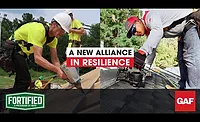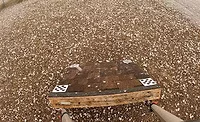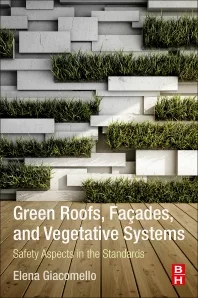Alabama’s 16,000 IBHS FORTIFIED Roofs Stand Up to Hurricane Sally
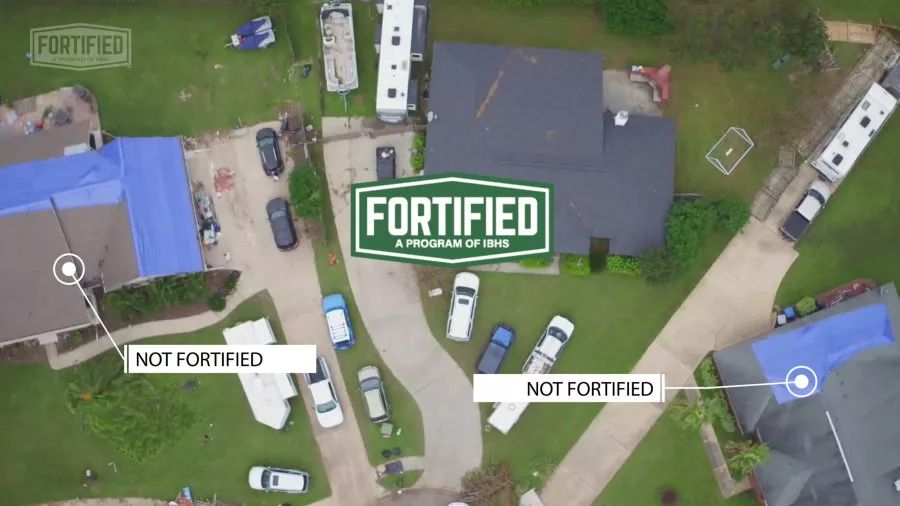
A comparison of the damage caused to FORTIFIED Roofs versus non-FORTIFIED roofs in Orange Beach, Ala., following Hurricane Sally. Photos courtesy of IBHS.
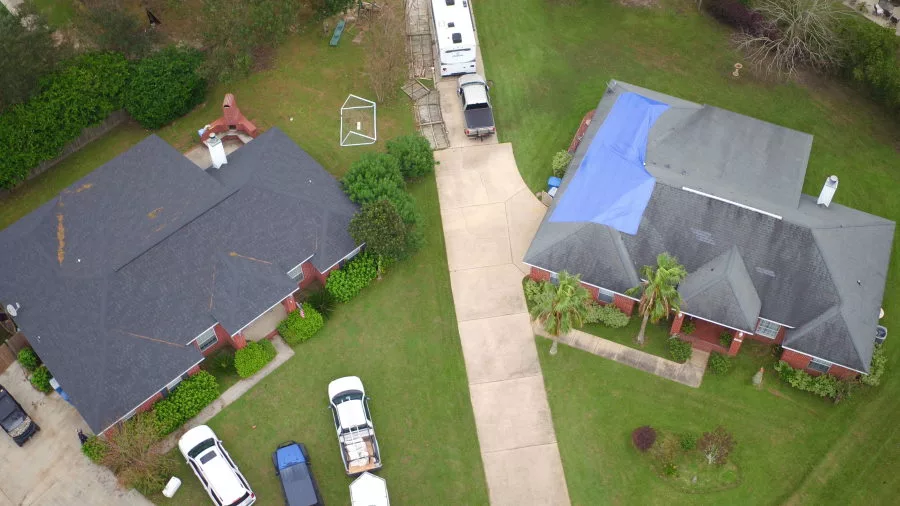
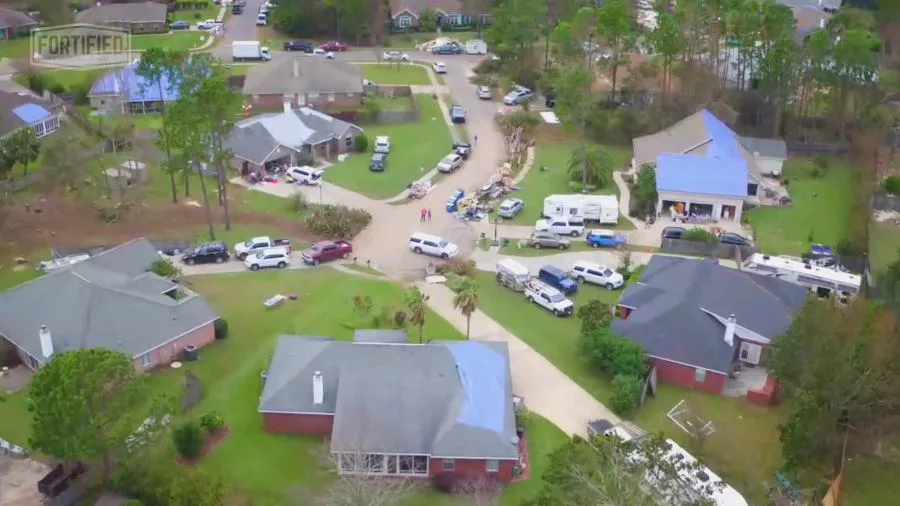
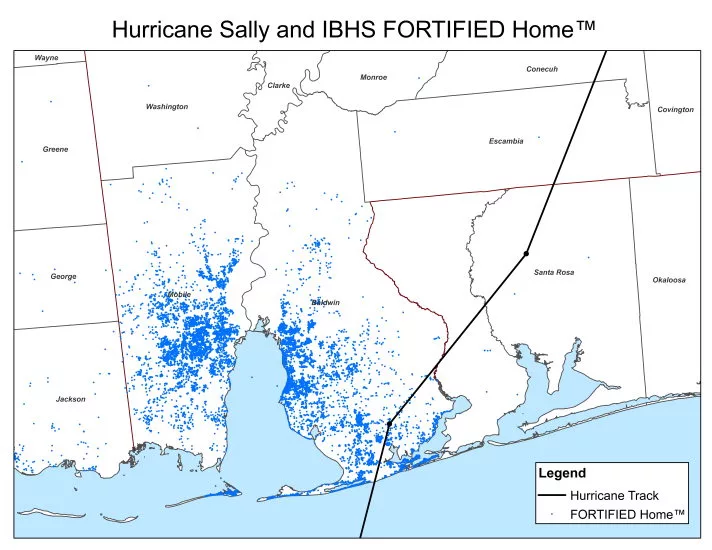
A map showing FORTIFIED Roofs in Alabama matched with Hurricane Sally's path.
In his 16 years of working as a roofing contractor, Ben Murphy, president of Ben Murphy Roofing in Foley, Ala., said the roofing damage due to Hurricane Sally is some of the worst he’s seen.
Hurricane Sally’s re-intensification from Category 1 to Category 2 and sudden turn to the east caught many by surprise, and its slow movement forced parts of Alabama and Florida to endure the eye wall for several hours in mid-September.
“Sixteen years ago we had Hurricane Ivan come through there and it wasn’t anything, as far as roofing-wise, compared to what’s going on this time,” Murphy said. “(Sally) was a smaller storm that moved 2 miles per hour, and that was the kicker.”
Naturally, Murphy was busy in the aftermath the hurricane, but not necessarily with repair work. The roofs his company installs are built using the Insurance Institute for Business & Home Safety’s (IBHS) FORTIFIED Roof system, and homeowners are quickly realizing the benefits of having FORTIFIED Roofs following Sally.
“We have zero damage on any roof we have done in the past five years, so nothing has been lost. We had three roofs that did have problems, but the reason they had problems is because they had trees fall through them,” he said. “When I’m going out and meeting with homeowners now, they’re specifically asking for me and they want a FORTIFIED Roof.”
Built to Last
The FORTIFIED Roof program is a three-tiered system that strengthens a roof to above-code standards that better resist severe weather events. In this case, around 16,000 FORTIFIED Roofs endured sustained wind gusts of up to 105 mph from Sally, said Fred Malik, managing director of FORTIFIED Building Products.
“It was a wind event, it was prolonged, and it took more than eight hours to pass through the area, and that really puts roofs under strain,” Malik said. “FORTIFIED is designed to keep what ultimately was primarily minor roof damage from cascading into larger-scale damage that lots of folks who were living under non-FORTIFIED Roofs experienced.”
Malik was among those from IBHS on the ground in Alabama surveying the damage after Sally. He said there was a stark contrast between the homes that were FORTIFIED and non-FORTIFIED, with traditional roofs being stripped down to plywood.
“We found pretty consistently that, on the FORTIFIED homes, there was minor shingle loss, but all the homeowners that we’ve worked with were essentially able to stay in their homes and stay sleeping in their dry beds, where quite a few cases their neighbors weren’t so lucky,” he said. “We’re talking about maybe a shingle tab here and there or losing some ridge shingles on hip roofs on the FORTIFIED Roofs.”
FORTIFIED Roofs are designed to resist water intrusion even if the roof cover fails. The main components that made a roof FORTIFIED is ensuring the shingles are nailed down and attached to the substrate, sealing the roof with a qualified sealed roof deck, and locking in the system with enhanced edge protection.
Opportunities for Roofers
A number of factors went into Alabama becoming a real-world test that FORTIFIED Roofs do their job. Alabama has one of IBHS’ largest collections of FORTIFIED Roofs, partly due to many local building codes requiring them for new homes and replacement roofs, but also thanks to statewide incentives.
Malik said Alabama has a grant program that helps homeowners, but it also allows people to gain discounts for property insurance by having a FORTIFIED Roof. The state even has a FORTIFIED Roof Endorsement program where, if a roof has this endorsement, it pays the difference for upgrading to a FORTIFIED Roof when it’s repaired.
“Because we have such a large volume there already, we have a network of roofers that are pretty experienced with putting on FORTIFIED Roofs,” Malik said. “The amount of phone calls, the amount of opportunities that those roofers are seeing out there is mind-blowing.”
Murphy has been a part of the program since 2010. He said around four years ago, his company made the decision that every roof his company installs is FORTIFIED. He admits it does cost the customer more to have one installed, but the benefits are worthwhile.
“The fact is it helps the local economy get back on its feet so much faster,” he said. “We had restaurants open two days later after the storm as soon as we got power. The houses were livable, they may not have had power … but (people) were able to be here and go to work, and nobody was displaced for months and months.
“Seeing the success that it’s had is pretty incredible.”
Along with Alabama, IBHS’ FORTIFIED Roofs are found along the Gulf Coast and North Carolina — which offers similar endorsements and incentives like Alabama —but additional locations throughout the country are starting to demand the roofs as well. For example, Malik said in Florida, there are processes in place that will align building codes with FORTIFIED requirements.
To assist interested roofing contractors, IBHS launched a virtual training program over the summer. The 10-module course walks them through what a FORTIFIED Roof is and can be perused at the user’s speed. Once it’s completed, participants can take a multiple-choice exam to become a certified FORTIFIED WISE-Roofer.
Since IBHS is a nonprofit, it isn’t looking to make a buck with FORTIFIED Roofs. In fact, it made the first module of the training free to allow interested roofing contractors to check it out for themselves.
“What we’re trying to do is we’re trying to connect people with good information, best practices, and help a roofer and their client achieve the client’s goals,” Malik said.
Visit fortifiedhome.org/training for more information.
Looking for a reprint of this article?
From high-res PDFs to custom plaques, order your copy today!




